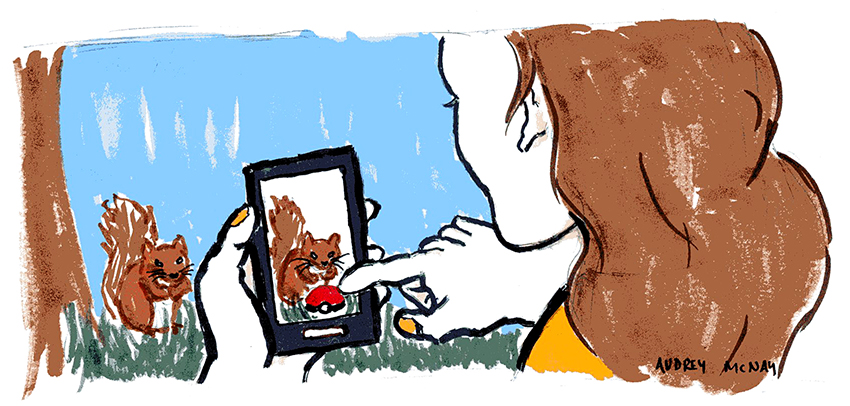It’s like Pokemon Go, but with real plants and animals.
iNaturalist and eBird are apps that use map software and GPS coordinates similarly to Pokemon Go. They allow users to log observations, discover what animals and plants have been spotted in the area and identify species they come across.
eBird allows users to upload lists and counts of birds they’ve seen while outside, whether they’re birding or simply walking across campus. Users can look up different bird species or calls as well as compose a list of birds they have spotted.
iNaturalist encompasses most types of organisms, including plants, animals and fungi, and requires users to post a photo of an organism or a recording of a call. The addition of media allows others online to verify the identity of an organism. Researchers and volunteer-led projects, such as eButterfly and Plants of Texas, often aid in the the verification process. Anne Chambers, a third-year graduate student in the UT integrative biology department, said she uses iNaturalist to gather data for her research on milk snake species.
“[The apps] are a free and easy way to keep track of what you’ve seen,” Chambers said. “You can look online, anywhere, right from your smartphone.”
For example, a person could be relaxing by the turtle pond and snap a photo of a turtle or a plant growing by the sidewalk, and someone in the iNaturalist app could identify it as a red-eared slider turtle or a lantana flower within the hour.
Robby Deans, a fifth-year ecology graduate student, said these apps provide a fun activity when walking around outside and can also be used as a learning opportunity.
The data collected by the apps also open up huge fields of potential research, Deans said. This phenomenon is called citizen science: Through mass collection of data by the general public, researchers can get information of greater depth and quantity than they could ever achieve alone.
“People can make whole projects on figuring out how the distribution of organisms is changing [by using the data collected in the apps],” Deans said. “At an even more basic level, we can figure out what that distribution of an organism is.”
Gautam Surya, a fifth -year ecology graduate student, said apps like eBird are important for research related to conservation planning and landscape ecology analysis. He said this data is crucial for understanding biological communities and the diversity of an area. This knowledge can help policy-makers create policies specific to a region.
These apps aren’t just for scientists, though. Chambers said one important outcome of these apps is the diverse community they create.
“A lot of the people who use iNaturalist aren’t scientists,” she said. “They’re people who like the outdoors.”
iNaturalist brings together hikers, nature enthusiasts, gardeners and researchers to share and admire information, Chambers said. The app, like Pokemon Go, encourages people to visit new places and see what they can find, and, like with a Pokedex, allows people to learn about what they discover.
“To be able to [use the apps] to see observations across the world from anywhere at any time, for any group of plants or animals, it’s just really cool,” Chambers said. “It’s a great way to get people involved [with nature].”















